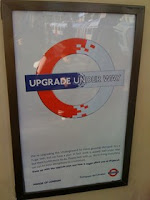I decided to research further into Children's book covers, and how the images and illustrations are used to interact and educate young children. Here are some images I researched looking at how Children's book covers often include bright and vibrant colours which draw attention to the image and type, they also often have simple or bold text in a large format which is easy to read and understand for a younger audience;
All the images above are well known and famous Children's books that have been in production for many years.
Below is a Children's book cover that I previously designed for my own Colouring book which was produced and bound last year. Here are some images, this shows how I tried to incorporate 'typical' children's book elements, with bright colourful imagery and simple typography.
Here are some images of me and my cousin reading some children's books;
[Me and Kyle]
Many Graphic illustrators specialise in Children's books, and children's animation. Here are a select few;
Alexandra Ball
Simple designs by Alexandra Ball above show her illustrative approach to represent child like comic designs.
Tim Bradford
Tim Bradford has a simple and detailed illustrative design focus which along with pastel tones gives a calm and peaceful feel to his work.
Hannah Davies
Again, Hannah Davies has a very different approach yet still very 'characterised' and focused heavily on a younger audience like children. I really like her working style, it has an essence of fun, happiness and enjoyment.
Joel went on to do some further research into Children's book covers, whilst I then developed my understanding of advertisements on transport. Here are his findings;
Illustration seems to dominate the genre which I guess is to be expected. Sometimes it seems to even imitate the haphazard style of actual children's drawings and the blissful innocence that comes with that. We also see the use of vibrant colour to attract kids in. They are very much designed to play with the vivid imagination that children possess.
I was pleasantly surprised to find books with a heavy focus on typography as oppose to image mixed in between the barrage of illustrative examples. However they still focus on creating that hand drawn look. This seems to be a prevalent concern within the industry.
I find this 'Moomin' book interesting. It plays on that illustrative lure that the previous examples use but combines it with a modern graphic edge using gothic type.










































